Policy Briefs
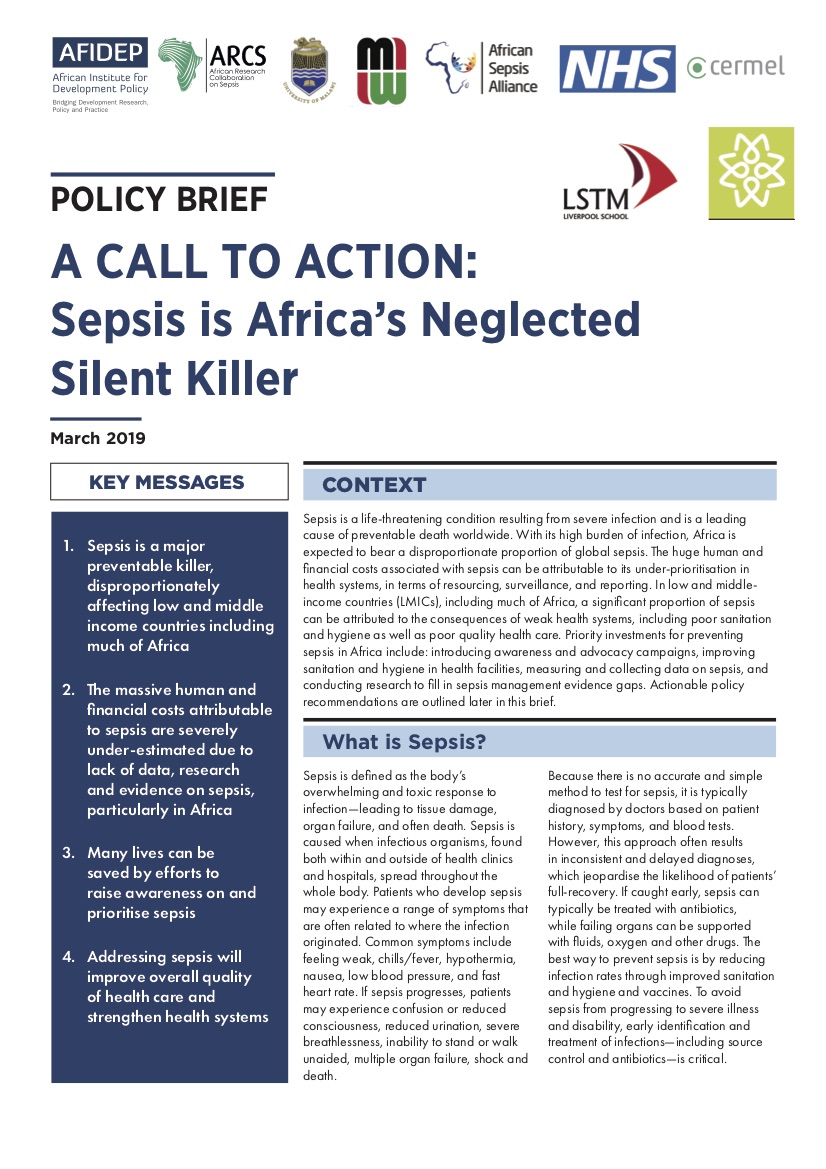
Sepsis is a life-threatening condition resulting from severe infection and is a leading cause of preventable death worldwide. With its high burden of infection, Africa is expected to bear a disproportionate proportion of global sepsis. The huge human and financial costs associated with sepsis can be attributable to its under-prioritisation in health systems, in terms of resourcing, surveillance, and reporting. In low and middle-income countries (LMICs), including much of Africa, a significant proportion of sepsis can be attributed to the consequences of weak health systems, including poor sanitation and hygiene as well as poor quality health care.
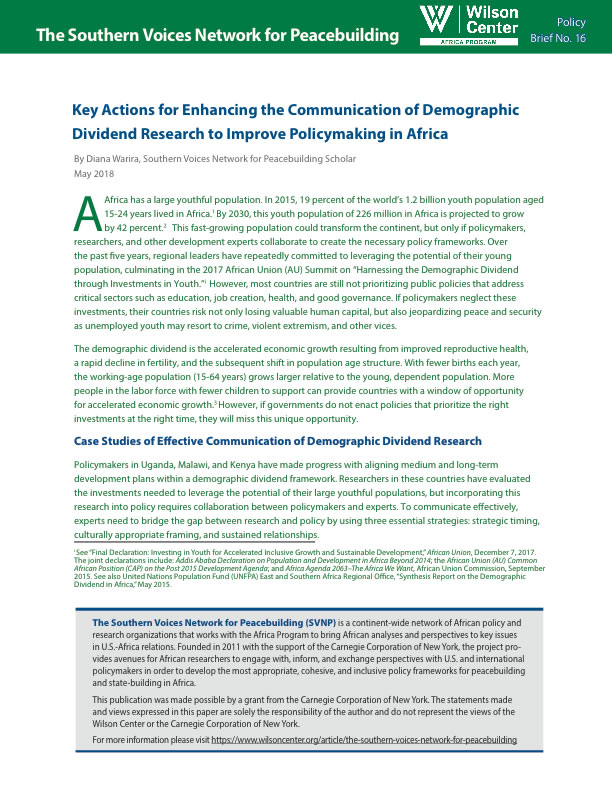
Policy-makers in Uganda, Malawi, and Kenya have made progress with aligning medium and long-term development plans within a demographic dividend framework. Researchers in these countries have evaluated the investments needed to leverage the potential of their large youthful populations, but incorporating this research into policy requires collaboration between policymakers and experts.
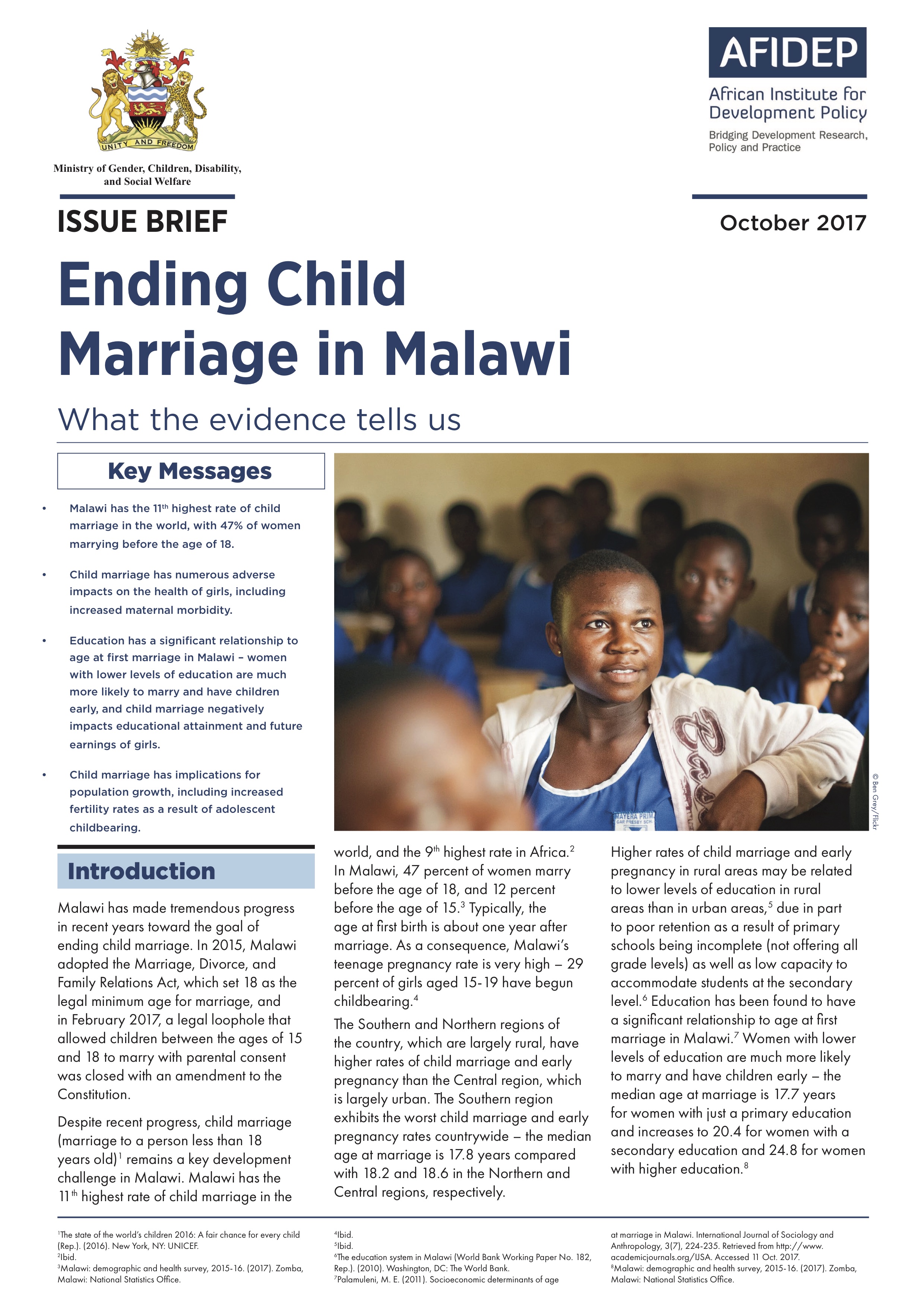
Malawi has made tremendous progress in recent years toward the goal of ending child marriage. In 2015, Malawi adopted the Marriage, Divorce, and Family Relations Act, which set 18 as the legal minimum age for marriage, and in February 2017, a legal loophole allowing children between the ages of 15 and 18 to marry with parental consent was closed with an amendment to the Constitution.
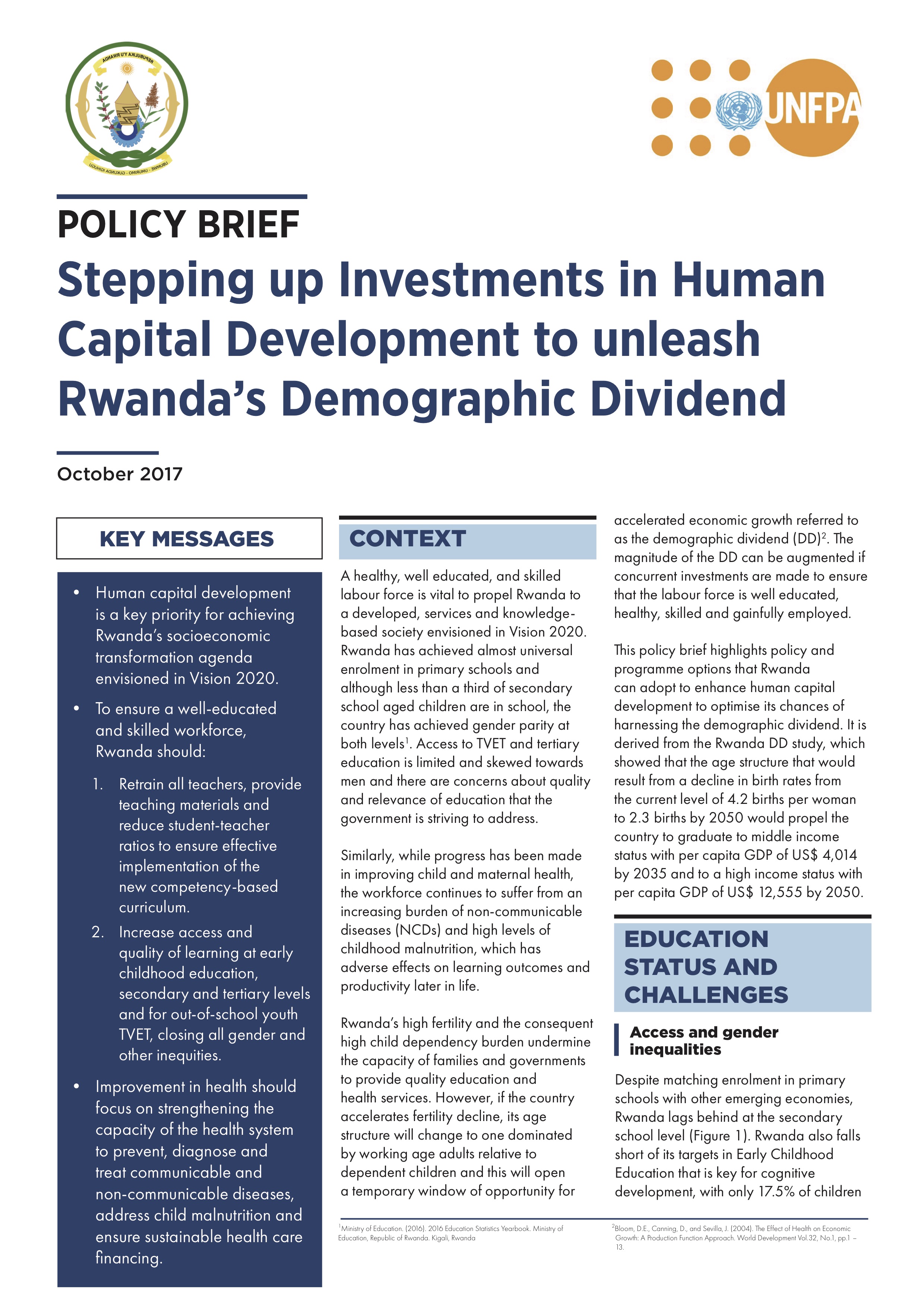
This policy brief highlights the policy and programme options that Rwanda can adopt to enhance human capital development to optimise its chances of harnessing the demographic dividend. It is derived from the Rwanda DD study, which showed that the age structure that would result from a decline in birth rates from the current level of 4.2 births per woman to 2.3 births by 2050 would propel the country to graduate to middle-income status with per capita GDP of US$ 4,014 by 2035 and to high-income status with per capita GDP of US$ 12,555 by 2050.
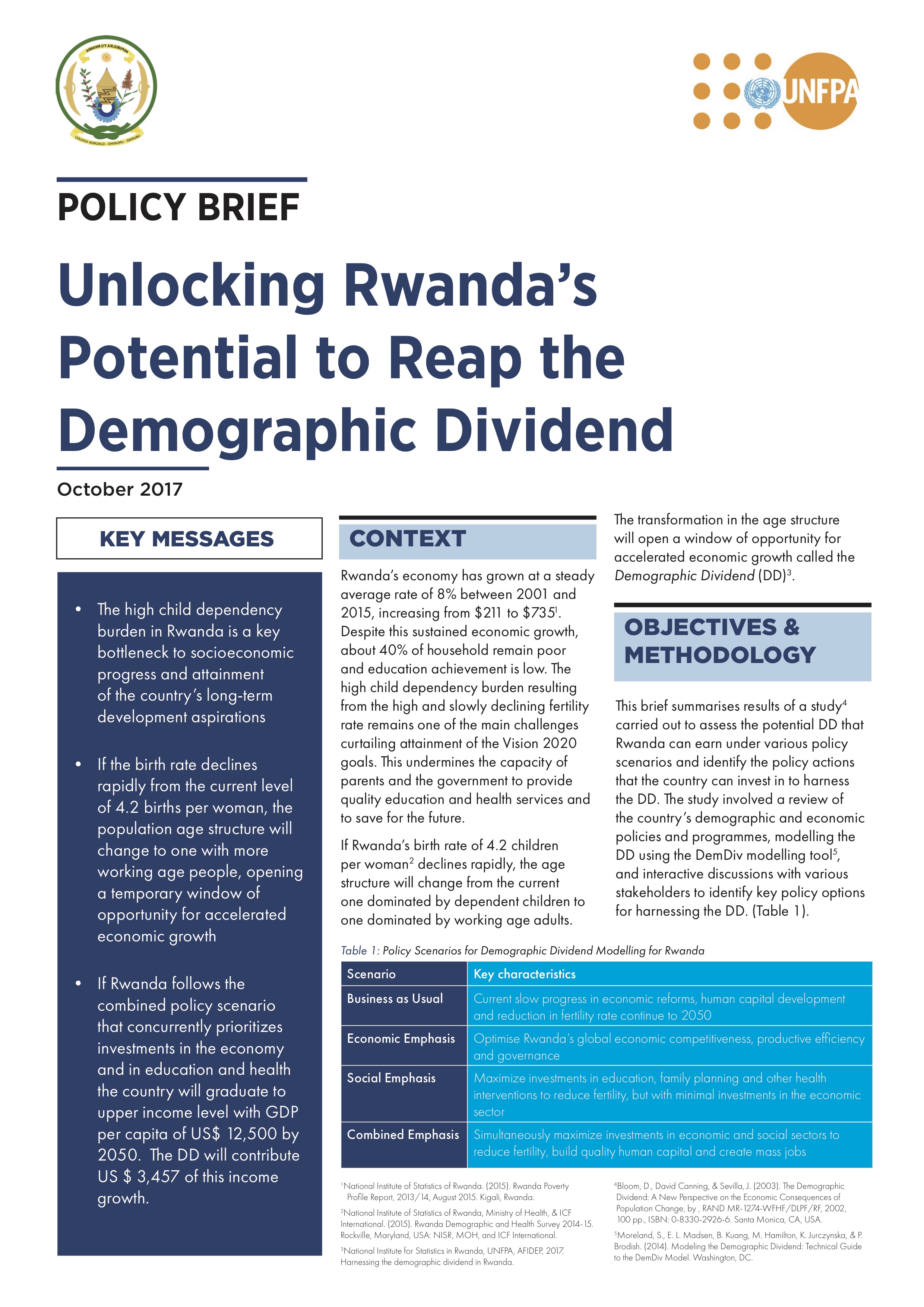
This brief summarises results of the study carried out to assess the potential demographic dividend (DD) that Rwanda can earn under various policy scenarios and identify the policy actions that the country can invest in to harness the DD. The study involved a review of the country’s demographic and economic policies and programmes, modelling the DD using the DemDiv modelling tool, and interactive discussions with various stakeholders to identify key policy options for harnessing the DD.
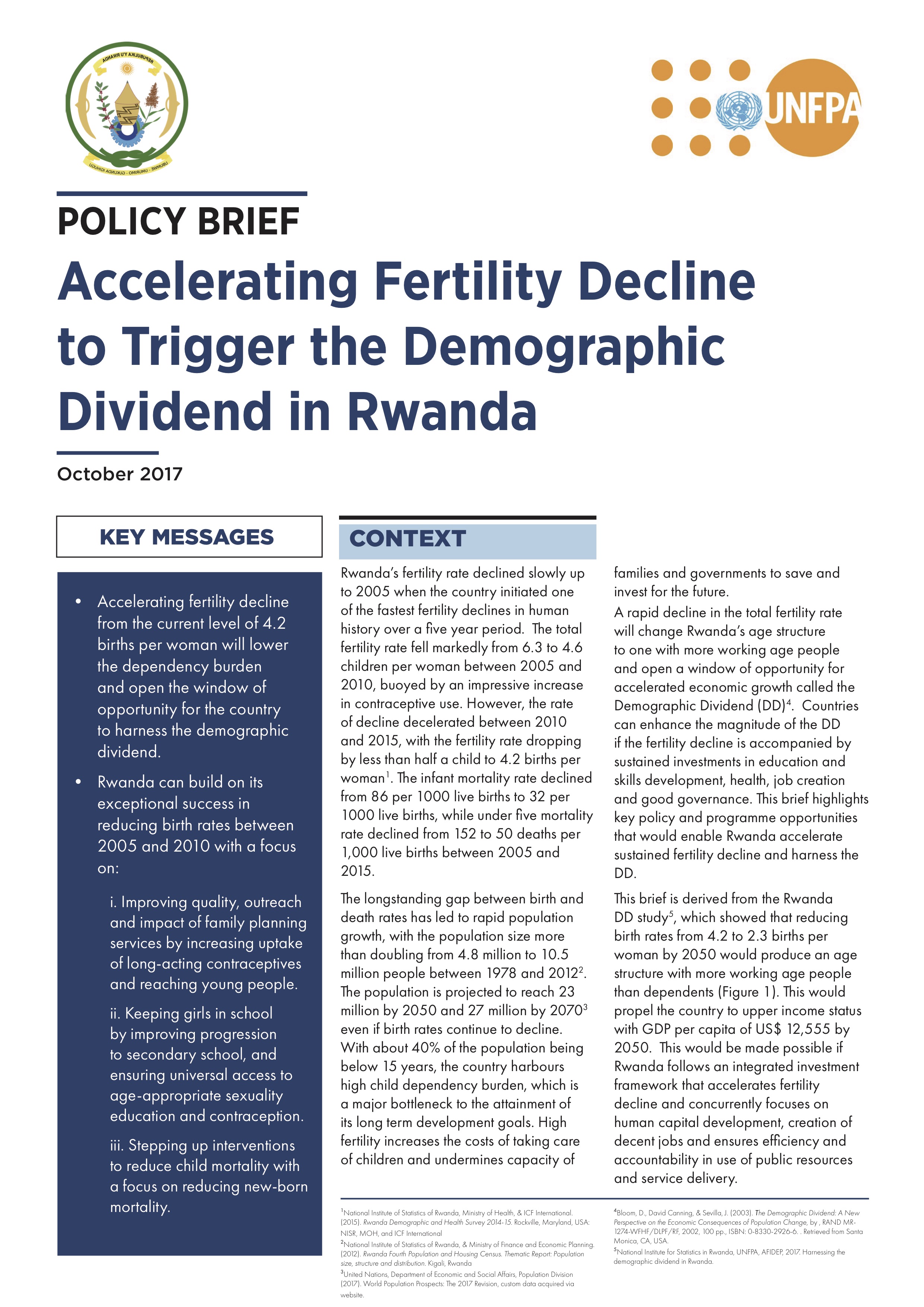
This brief is derived from the Rwanda Demographic Dividend (DD) study, which showed that reducing birth rates from 4.2 to 2.3 births per woman by 2050 would produce an age structure with more working age people than dependents. This would propel the country to upper-income status with GDP per capita of US$ 12,555 by 2050.
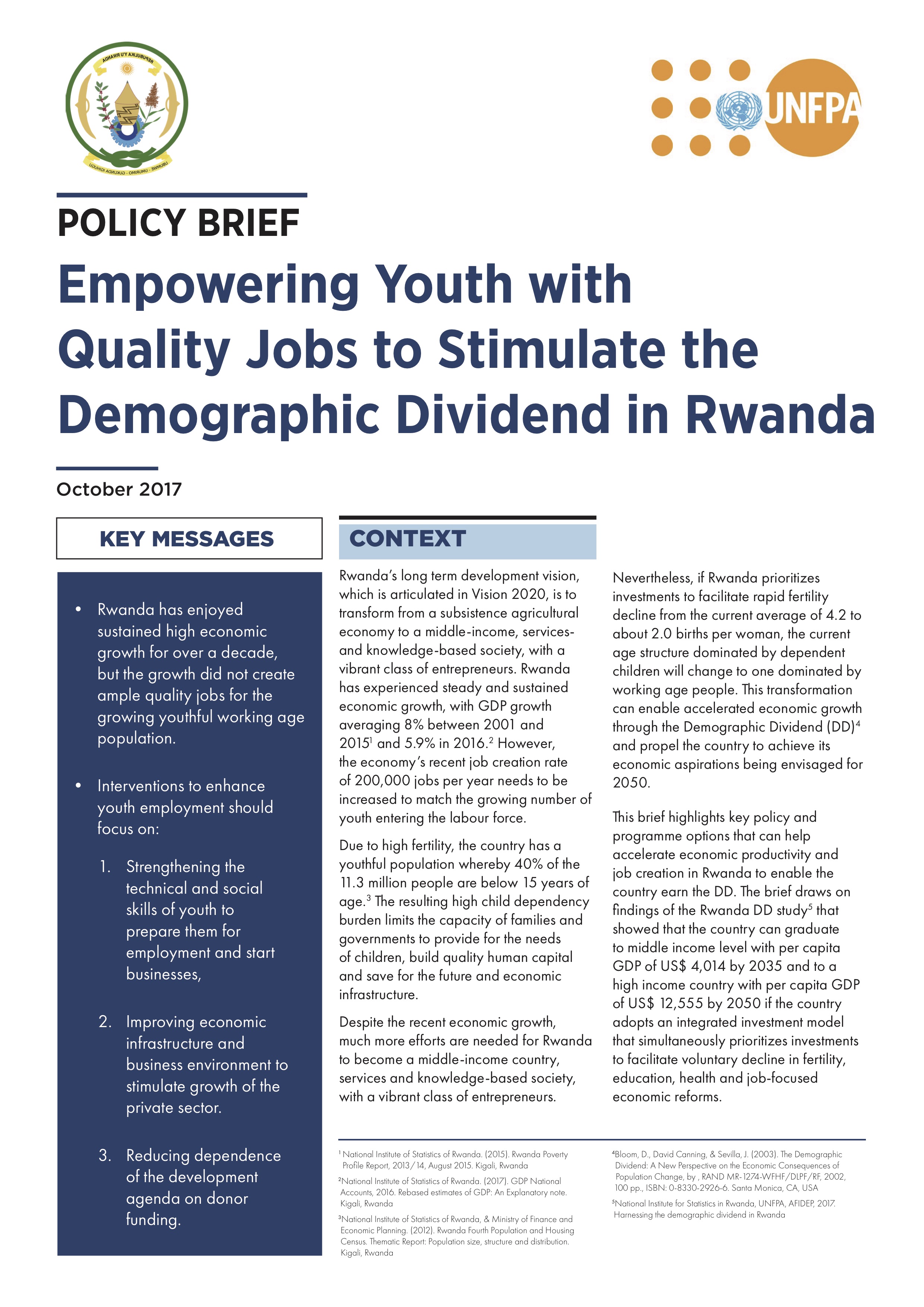
This brief highlights the key policy and programme options that can help accelerate economic productivity and job creation in Rwanda to enable the country earn the DD. The brief draws on findings of the Rwanda DD study that showed that the country can graduate to middle-income level with per capita GDP of US$ 4,014 by 2035 and to a high-income country with per capita GDP of US$ 12,555 by 2050 if the country adopts an integrated investment model that simultaneously prioritises investments to facilitate voluntary decline in fertility, education, health and job-focused economic reforms.

This policy brief presents the challenges facing the sustainable financing of Malawi’s national health research system, the commitments already made to improve the country’s health research as well as individualized case studies of countries Malawi could benchmark its own research funding mechanism. Finally, this policy brief also recommends specific reforms the respective Ministries and National agencies should implement to support research generation and utilization for decision-making.
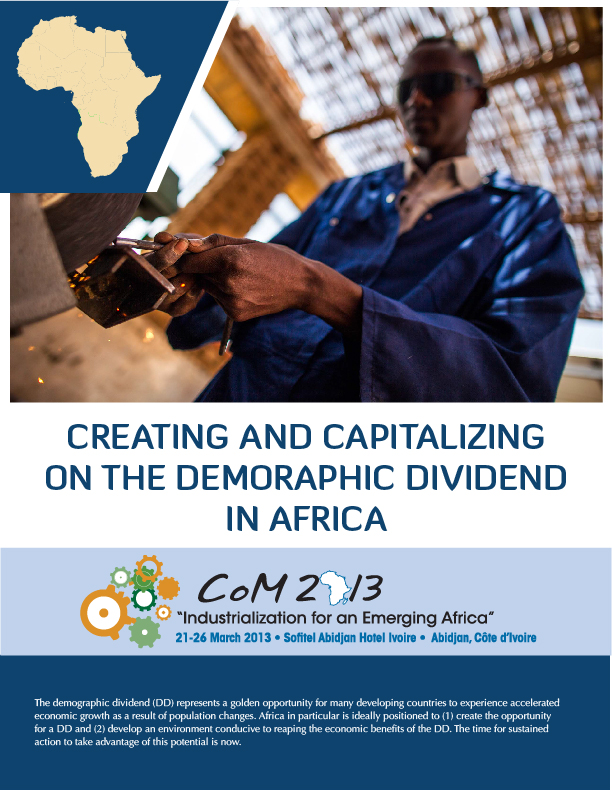
The demographic dividend (DD) represents a golden opportunity for many developing countries to experience accelerated economic growth as a result of population changes. Africa in particular is ideally positioned to (1) create the opportunity for a DD and (2) develop an environment conducive to reaping the economic benefits of the DD. The time for sustained action to take advantage of this potential is now.
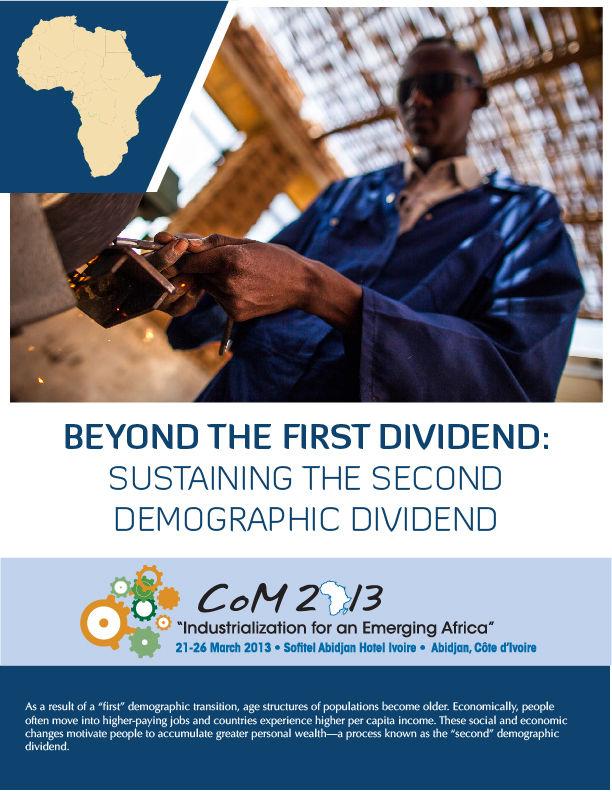
As a result of a “first” demographic transition, age structures of populations become older. Economically, people often move into higher-paying jobs and countries experience higher per capita income. These social and economic changes motivate people to accumulate greater personal wealth—a process known as the “second” demographic dividend.
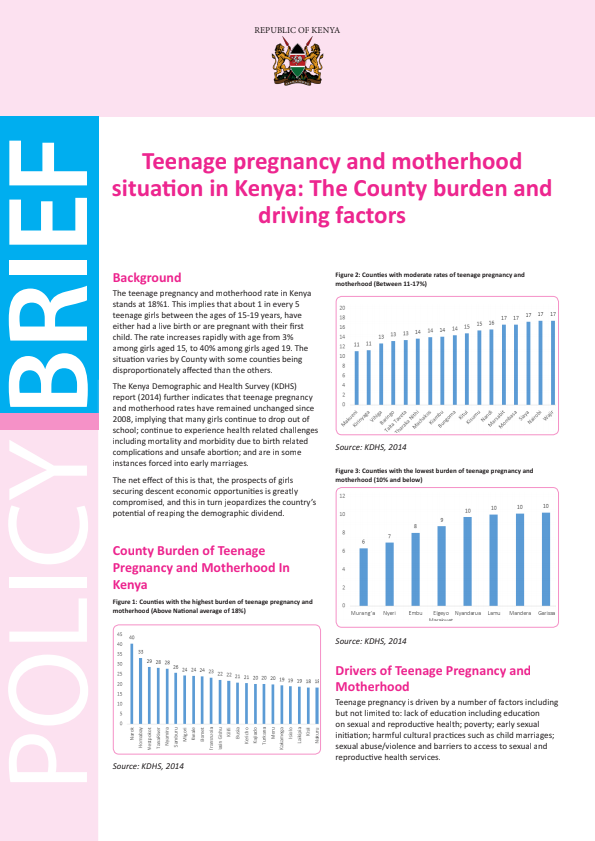
The teenage pregnancy and motherhood rate in Kenya stands at 18%. This implies that about 1 in every 5 teenage girls between the ages of 15-19 years, have either had a live birth or are pregnant with their first child. The rate increases rapidly with age from 3% among girls aged 15, to 40% among girls aged 19. The situation varies by County with some counties being disproportionately affected than the others.
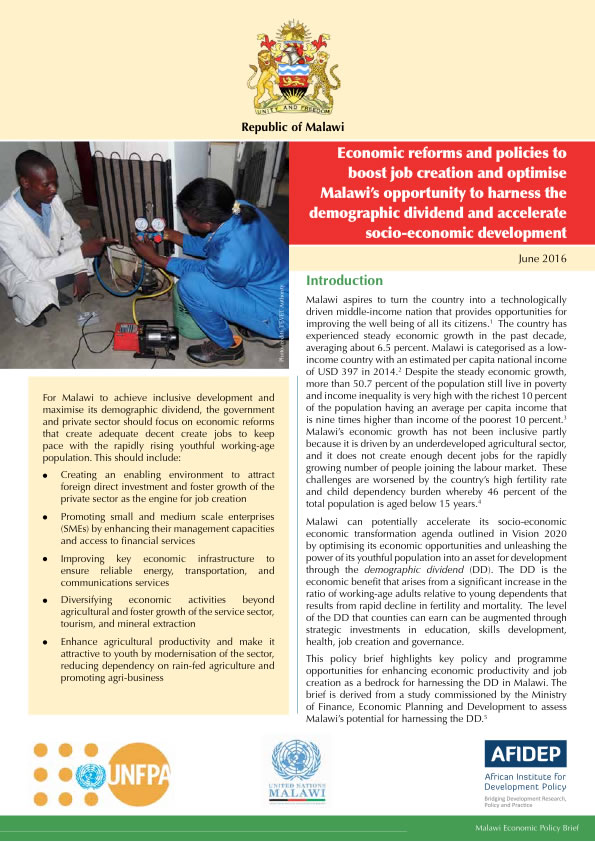
For Malawi to achieve inclusive development and maximise its demographic dividend, the government and private sector should focus on economic reforms that create adequate decent create jobs to keep pace with the rapidly rising youthful working-age population.

